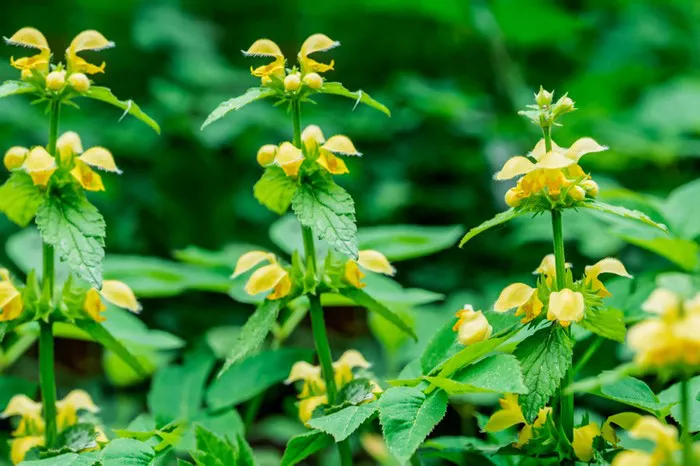Not all flowers are as innocuous as they appear, and the yellow archangel (Lamiastrum galeobdolon) stands as a prominent example. Adorned with hooded bright yellow petals and lush green leaves, this plant, introduced from Europe and Asia to North America as a rapid-growing perennial ground cover, conceals a less charming truth: it is, in fact, a noxious weed.
While readily available for purchase at local garden centers, the yellow archangel is among those invasive plants strongly discouraged for cultivation in yards or even planters. Known for causing disruptions when it escapes into the wild, it has been banned in certain regions of the United States. However, there are methods to eradicate this troublesome weed from gardens without harming other flora.
Understanding the Yellow Archangel
Mistaking these deceptive invasive plants for benign flowers is understandable, given their vibrant yellow petals and spearmint-like foliage. Belonging to the mint family, one might assume they offer benefits to garden growth. Yet, in reality, the yellow archangel has been identified as a concern in Pacific Northwest territories, including Washington State and British Columbia, due to its adverse effects on local wildlife.
Planting yellow archangels in residential areas poses risks to nearby natural habitats. These noxious weeds often escape cultivation and form dense colonies in adjacent forests and green spaces. Not only do they fail to provide adequate sustenance for wildlife, but they also smother indigenous plants. In substantial numbers, yellow archangels have the potential to disrupt entire ecosystems. Recognized as a quarantined species, the trade of its seeds is prohibited in Washington. Nonetheless, it is imperative to prevent the proliferation of yellow archangels regardless of one’s location.
Effective Removal and Prevention Strategies
Preventing the spread of this invasive weed is paramount, beginning with abstaining from its cultivation. This precaution extends to contained planters like pots and hanging baskets, as improper disposal from such containers often contributes to yellow archangels invading the wild. For those already grappling with yellow archangel infestations, several removal methods exist that minimize harm to surrounding vegetation.
One approach involves manually uprooting the weeds, ensuring the complete extraction of roots to prevent regrowth. Disposing of the plants in a separate bag and covering the area with landscape tarp and mulch aids in containment, albeit requiring significant time investment. Alternatively, smothering the affected area with landscape fabric layered beneath newspapers, cardboard, and woodchip mulch effectively stifles growth. Adequate coverage is essential for this method’s success. In cases of extensive infestation, employing mechanical tools and pesticides or seeking professional assistance may be advisable. Combatting invasive plants presents challenges, given their resilience, yet arming oneself with appropriate knowledge affords a strategic advantage.


